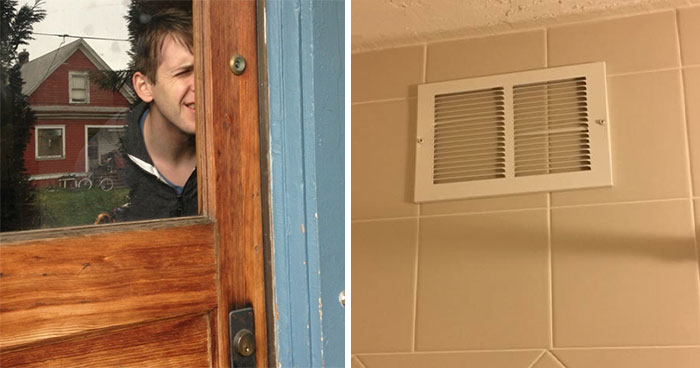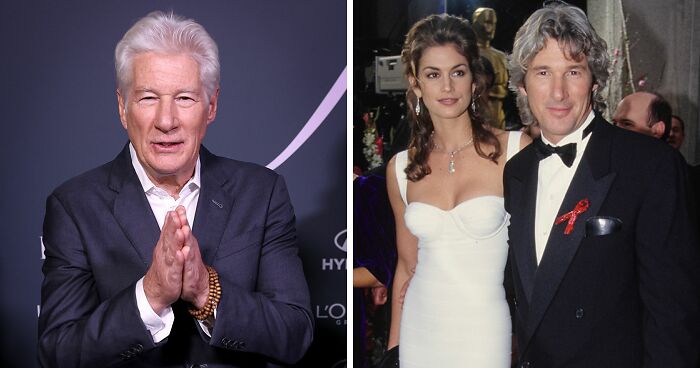
30 Breathtaking Images That Offer A Glimpse Of The Mysteries Of The Universe
Interview With ExpertHumans have relentlessly explored space for over six decades now. We have launched satellites, sent astronauts to the Moon, landed rovers on Mars, and flown spacecraft beyond our solar system.
But we've been gazing into the night sky for much longer. And the appropriately titled X account 'Space' is the perfect example of why.
It's dedicated to sharing breathtaking pictures of distant galaxies, nebulae, and planetary wonders, highlighting the awe that floods you whenever you look up.
Continue scrolling to check them out and don't miss the chat we had with astrophotographer Alexander Curry — you'll find it in-between the images.
This post may include affiliate links.
Was Orion shooting from his belt? Seriously, that's a wonderful photo. How did the earth come out as a crescent, though, when it's flat? Shouldn't it have come out a slice of bread instead?
Well, Andromeda will seem brighter the closer it comes. Hang around for a couple of billion years, and you'll be able to see it very well.
To learn what motivates one to point their lens up, we contacted Alexander Curry. He is a fellow of the Royal Astronomical Society and the co-founder of Telescope Live, an online platform that provides access to a network of telescopes around the world, enabling enthusiasts, researchers, and educators to explore the night sky.
"I think, like most people, I became interested in astronomy as a child—my father had bought a small SCT telescope as we were both interested in space, and we spent time familiarizing ourselves with the go-to navigation and visual astronomy," the astrophotographer told Bored Panda.
"I think through natural progression once I was a teenager and wanted to experiment more with photography & astronomy, I bought a cheap adapter to mount my DSLR to the back of the telescope and take images of Jupiter, Saturn, and the Orion Nebula (all of the brightest targets in the night sky!), and once I was over the hurdle of being able to get clear images of these targets I was hooked even further and began to read & watch tutorials on how to better process using simple actions in Photoshop, etc."
With a little hamburger bun in the centre. The dark line across the centre of the hamburger is the circum-stellar disk.
Hubble better give Saturn his aurora back! You don't mess with a god!
However, it's difficult to say with certainty whether it's the gear or skills that are responsible for good results.
"This question is a 50/50, as anyone can produce great results with very basic equipment (for example, I recently went on holiday and took some great nebula pictures with just a DSLR and without a tracking mount), however, I think people who are new to astrophotography should learn to understand the limits of their equipment and how it properly functions," the astronomer explained.
"This way, they are not frustrated if they can’t produce the image they wanted the first time around."
Anyone else seeing a guy in a pointy hat holding a teddy bear and riding a dragon, or did I just have too much wine with my dinner?
Amazing to think Voyager was launched with less computing power than a smart watch, and it has just kept on going. It's now closer to the Oort Cloud than our solar system. I do sometimes think that the first alien contact we have will be an alien with Voyager embedded in it's equivalent of a bumper...
According to Curry, "astrophotography takes a lot of practice and trial and error to find what works well for the software you are using and the equipment that you have."
But that's the beauty of it. "I don’t think there is any single astrophotographer who isn't always learning something new as this hobby changes over time with new software, techniques, and developments in equipment. Creating a great image of any deep space object requires the perfect balance of equipment control and post-processing skills," he added.
Chris Barnes is an academic psychologist at the University of Derby in the UK studying nature connectedness — the links humans feel to nature — and how that may benefit us.
With a passionate interest in astronomy and the night sky, Dr. Barnes wondered whether the connection felt by some people to nature in the day would also exist for the night.
However, when reviewing the existing scientific literature left him unsatisfied, he set out to do some research himself.
"I'd discovered that there was very little in terms of the research that was talking about people's connection to the natural world at night," he said last month.
"Whether that be the night sky and what it has to offer, but also the impact that light pollution has upon people's connection to the night sky."
So Dr. Barnes set out to develop a measure that could quantify how connected we feel to the night sky, aptly named the Night Sky Connectedness Index.
It's a 12-item test, with each one being a statement such as "I find beauty in the night sky" or "I feel at home under the night sky".
People respond with how much they agree or disagree and are scored based on their answers.
The lowest score is zero, meaning no connection to the night sky, and the highest is 120, which signifies a very strong connection.
Dr. Barnes tested this measure of night sky connectedness on more than 400 people, and he also gave them tests rigorously developed in previous studies to measure their levels of happiness, resilience, and mental well-being.
Those who reported a stronger connection to the night sky scored better on mental health and happiness scales too.
The findings were published earlier this year, and Dr. Barnes suggests that the connection may stem from the mindfulness people experience while stargazing—the chance to be fully present and embrace the awe that washes over us when we look at the night sky.
Time spent under the stars may have physiological effects similar to spending time in nature during the day, including decreases in blood pressure, reported stress, and cortisol levels, Dr. Barnes said.
"So we really enter this state of physiological relaxation which is good for us. The more we do those kind of things, the more likely we are to see these wellbeing benefits."
I remember seeing the original Hubble version, and was in awe. The JWST makes it simply breathtaking.
I'm getting real Jules Verne vibes here. There is something very artistic about this. The other photos are stunning and gorgeous to look at, but this is almost quaint.
As it all connects to a bigger picture, Alexander Curry thinks there are several ways that images of space can shape the way people think about their place in the universe.
"First and foremost, both my and other people's pictures give such a sense of awe and curiosity as we consider the size and beauty of these objects and how they are natural occurrences on a scale that we can’t comprehend."
"Secondly, some of the photos from satellites inside our own solar system can give a sense of perspective to our place in the universe, the very famous voyager image 'Pale Blue Dot' just shows how tiny we are even just in the perspective of our own solar system and when you look at nebulae and galaxies and see billions of solar systems similar to ours it really shows how vast and fascinating our universe is."
How beyond awesome is this? It brings me to tears.
I can't help feeling like this is what Earth would look like, if Van Gogh had painted it!
Finally, Curry believes astrophotography is an excellent tool for a shared interest in space.
"Being able to see pictures of obscure objects and things in the night sky that you wouldn't see published regularly can really inspire and give a sense of 'cosmic wonder' to people who may already be interested in space but want to discover something deeper," he explained.
Hopefully, they will help you achieve it as well!
I miss living in Egypt. Although I lived there in a much calmer and more open period
How did the people in the past who named it know it looked like a dragon from space?
This is by far my absolute favorite outer space picture. The nebulas and galaxies are fantastically beautiful, but the simplicity of this speaks to my heart. There's home.
Astronaut Scott Kelly needs to release Japan immediately!
The empire got the bright idea to repaint the death star to hide it from the rebels.
Though strange we never se that giant arrow looking up to the skies! /jk
I had to look this up. https://spacecenter.org/first-photo-taken-from-space/ from a modified V-2 rocket launched at White Sands. Rocket altitude 65 miles.
To quote the late, great Carl Sagan, 'we are all made of star stuff'.
Load More Replies...To quote the late, great Carl Sagan, 'we are all made of star stuff'.
Load More Replies...
 Dark Mode
Dark Mode 

 No fees, cancel anytime
No fees, cancel anytime 






























































































































































